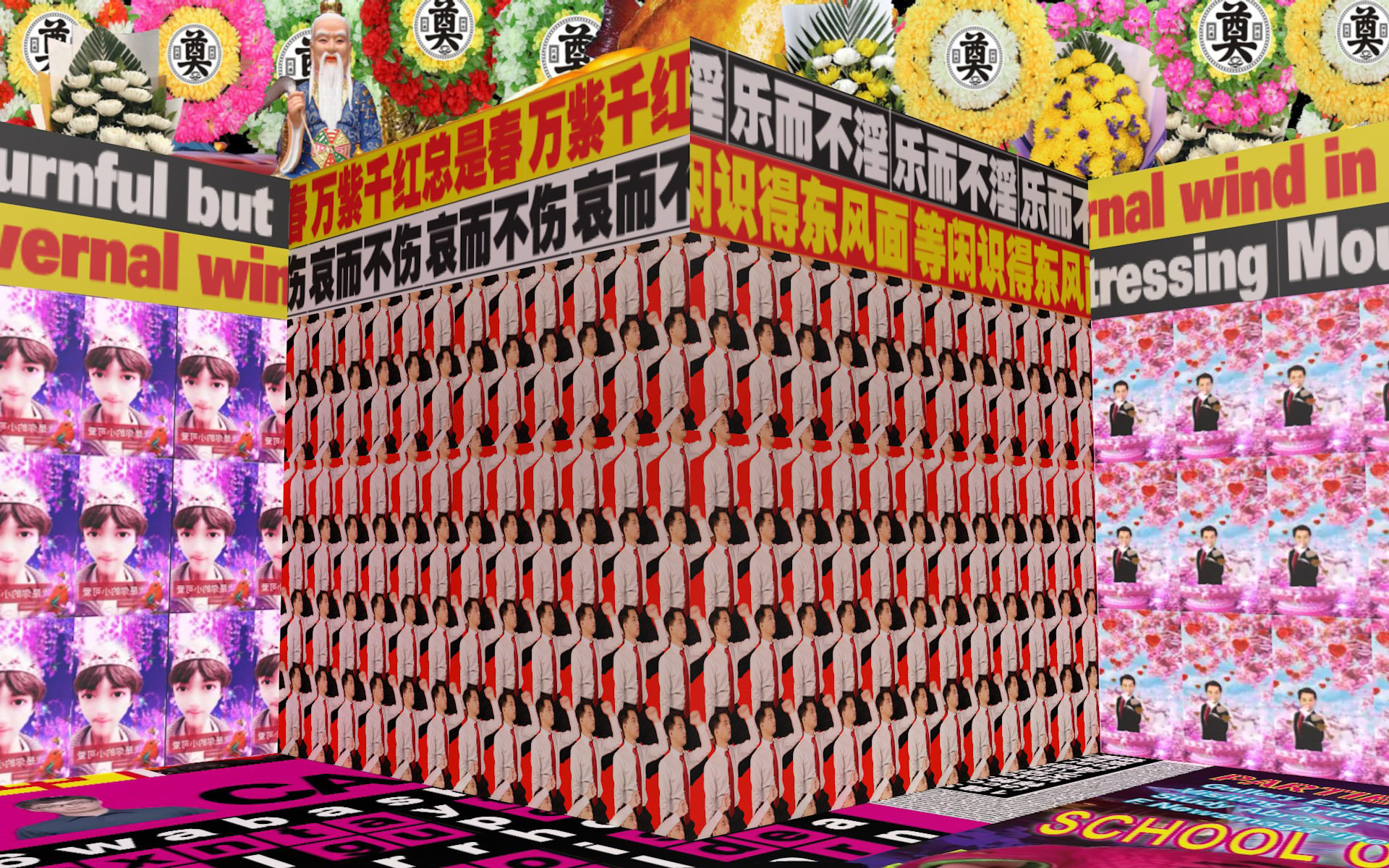In generative artist Zeng Siqin’s opinion, labeling personalities as ‘good’ or ‘bad’ is reductive. After all, individuality is nuanced, fluid, and not always easy to categorize.
An exploration of distinct cognitive and behavioral patterns led to Zeng’s latest project titled Flower: Portraits of Personality, in which the artist draws parallels between the sheer variety of flora and multifaceted personalities.
What makes this creative undertaking unique is its crowdsourced ideas. Despite captaining the project, Zeng didn’t make the final call on what each flower would look like; instead, WeChat users had the final say.
For Flower: Portraits of Personality, Zeng started by creating a survey based on the ‘Big Five Personality Traits’ (BFPT) framework. After sharing the survey on WeChat, Zeng fed the results to a self-devised algorithm. The quantified survey results informed the diverse shapes and colors of Zeng’s flowers.
“The generation of petal shape is based on ‘agreeableness’ [in the framework]. For example, petals with gentle curves indicate a higher degree of agreeableness, while pointed petals suggest a sensitive personality that might even be accompanied by a little aggression,” explains Zeng.
In Zeng’s flower portraits, each flower’s features are closely related to scales in the BFPT framework. For instance, the width of a flower relates to a person’s ‘openness,’ its height to ‘conscientiousness,’ its number of petals to ‘neuroticism,’ and the shape of its bud to ‘extraversion.’

Zeng Siqin’s concept brief explains how each volunteer’s personality is projected as a flower
For Zeng, both flowers and personalities are bywords of diversity.
“Everyone is a flower. No matter their personalities, they all add colors to this tremendous world. Because of every person’s existence, the world is brighter,” says the artist.
A Blossoming Artist
While Zeng has had a knack for art since childhood, it wasn’t until the graduate of the Academy of Arts and Design at Tsinghua University completed her current project that she considered herself a true artist.
This slideshow requires JavaScript.
In her first year attending the prestigious art institution, Zeng was baffled to discover a disconnect between her entrance examination and real artistic creation.
“I didn’t think I could create art. Neither did the rest of my classmates,” she recalls.
As Zeng discovered, the undergraduate program’s rigid and standardized entrance exam had failed to equip her and her coursemates with the essential knowledge and techniques to be an artist. Instead, their creative thoughts were hampered.
“We were taken captive [artistically speaking],” she says. “We had no time to create our own work and lacked creativity.”
At college, some of her devil-may-care classmates were simply dawdling until they obtained their diplomas. Others worked hard to create genuine artworks. As for Zeng, she was determined to acquire true craftsmanship and pursued her graduate studies at the Tokyo University of Art, Japan.
Self-Starter’s Setbacks
One of Zeng’s most significant challenges with Flower: Portraits of Personality was her lackluster knowledge of scientific procedures. Processing the data and gleaning insights from her survey data proved a hassle. Nevertheless, she rose to the challenge by familiarizing herself with SPSS, a professional data processing software.
Picking up programming language exposed her to a new genre of artmaking, namely generative art, characterized by the integration of computer-generated and human creation.
Despite her hard work, Zeng’s first draft displeased her thesis advisor, who found her color palette monotonous.

“I think, for a masterpiece, the essence is the core idea. People respect your work because of your central ideas; visuals are mostly a means to please the eye,” she says. Even so, her advisor emphasized that the works needed to be visually appealing and even threatened to fail her.
Zeng finally came to terms with her advisor’s requirements and tweaked her original mechanism while using the same data set. The result was a ‘garden’ of engendered flowers in abundant colors.
Embracing Traditional Craftsmanship
After nailing down her flowers’ appearances using digital means, Zeng’s next step was to give them physical shapes. Her technique of choice was something she had learned during her master’s program: yuzen, a Japanese resist-dyeing technique mainly applied to kimonos.
Unlike most traditional dyeing techniques, yuzen does not require dipping cloth in dye. Instead, paint is directly applied to sheaths of silk cloth using a needle-like pen, which results in a delicate and elegant design.
【Kyo-Yuzen (京友禅)】
“The dye is directly applied to the fabric and the designs often depict nature and animals of the different seasons.”
[Japanese Art Culture No. 274 (Ⅰ)]#KyoYuzen #Yuzen #Dyeing #Kimono #Kyoto #Japan #友禅染 #京友禅《Web》https://t.co/Z3RcxM8JWO pic.twitter.com/c1H0g67Ftr
— Art Japan (@Art21JPN) July 6, 2021
“Yuzen dyeing shares commonalities with traditional Chinese painting,” says the artist. “Since I had learned traditional Chinese painting, I didn’t hesitate to learn it [Yuzen] when I went to Japan.”
The unlikely pairing of traditional craftsmanship and modern technology ultimately led to the success of Zeng’s thesis project, which has been praised for its craftsmanship and expressiveness.
Zeng’s work has earned her the title of featured artist, as nominated by the KUMA Foundation of Japan. Zeng’s university also acquired some of her works for 300,000 JPY; however, this has meant giving up the exhibition rights to her pieces.
“I was actually quite stressed. I have hammered away at [my project] for more than half a year. Although this matter made me feel very honored, I was also very conflicted,” shares the artist. “I really hope that my works can be displayed without confinements.”
After pondering the university’s offer, Zeng ultimately agreed to the purchase. She concludes, “Many friends suggested I seize the rare opportunity because few graduates in history have been given this honor.”
Cover image designed by Haedi Yue; all photos courtesy of Zeng

















